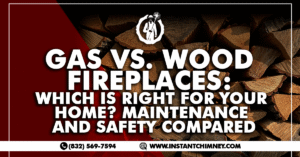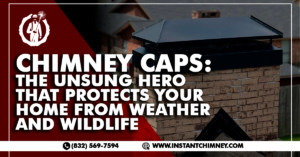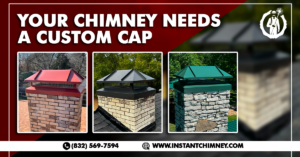How often should my chimney be sweeped?
“Chimneys, fireplaces, and vents shall be inspected at least once a year for soundness, freedom from deposits, and proper clearances,” according to National Fire Protection Association Standard 211. If required, cleaning, upkeep, and repairs must be made.
MY FIREPLACE SMELLS, PARTICULARLY DURING THE SUMMER. What can be done?
Creosote deposits in your chimney, a normal byproduct of burning wood, are to blame for the odor. Sometimes when it’s hot outside, when the humidity is higher, and when the air conditioner is running, the smell is worse. While a thorough sweep will help, it typically won’t solve the issue entirely.
When I use my upstairs fireplace, I get smoke from the basement fireplace?
This has become quite a common issue in modern air-tight houses where weather-proofing has sealed up the air infiltration routes. The fireplace in use exhausts household air until a negative pressure situation happens. If the house is tight, the simplest route for makeup air to enter the structure is often the unused fireplace chimney. As air is drawn down the unused flue, it picks up smoke that is exiting nearby from the fireplace in use and delivers the smoke to your living area. The solution is to introduce makeup air to the house so that the negative pressure problem is no longer a problem, thus eliminating not only the smoke issue, but also the potential for carbon monoxide to be drawn back down the furnace. Another solution is to install a top-mount damper on the fireplace that is used the least.
SHOULD MY GAS FIREPLACE ALSO BE INSPECTED?
Yes! Gas burns cleaner than other fuels, but bird nests, animals, or other debris blocking the flue can cause the chimney to stop working. With the typical flues designed for older generations of furnaces, some newer furnaces can also cause a lot of issues. To be safe, it is best to check the areas for gas and carbon monoxide.
How do I tell if they really cleaned my chimney?
A complete chimney sweeping includes the chimney flue and smoke chamber. You will be able to visibly see the that the flue is cleaner. Ask for a report after the sweeping is done.
WHAT STEEL LINERS NEED INSULATION AND WHY?
Insulation is not necessary for oil- and gas-fired appliance liners to meet installation and warranty requirements set forth by the manufacturers. Less heat transfer and lower flue gas temperatures make it less likely that they will ignite nearby combustible materials. There are provisions that permit the chimney liner to be installed in a method known as a zero/zero install if combustible materials are in close proximity to the chimney. The idea of insulating each liner that serves a wood-burning appliance makes more sense. Insulation in the liner will help all appliances, including those that burn gas and oil and are vented into an outdoor chimney.
What is safe to burn in my fireplace?
It is safe to burn dry, seasoned firewood in your fireplace. Dry firewood typically has a moisture content of less than 20% and has been properly stored for at least six months to a year. Hardwoods like oak, maple, birch, and ash are excellent choices as they burn longer and produce more heat. Softwoods like pine and fir can also be burned, but they tend to burn faster and produce less heat. It is important to avoid burning treated wood, painted wood, or any materials that may release toxic fumes when burned. Additionally, never burn trash, cardboard, or paper products in your fireplace as they can cause excessive smoke and potentially start a chimney fire.
Contact us at (832) 569-7594 to schedule a comprehensive FREE chimney inspection today.
Visit our website to learn more about our services.



